Men-at-arms of the 14th century would have carried large daggers for hand-to-hand combat in the list or on the battlefield. This era saw continuous development of weapons and armor but a sidearm like this dagger is depicted throughout the century in armored confrontations. This recreated example has a blade of well tempered 6150 high carbon steel which is stiff and rigid to ensure it can penetrate thick cloth or the weak point of an armored harness reliably. The guard and pommel are well cast mild steel and the grip is wood which is tightly bound in beeswax-infused leather which was heated and shrunk to the grip for a tough, long-lasting and historically accurate grip leather treatment method. The blade is durably peened over the pommel to give it a robust and durable construction.
Martial training in the medieval period used wrestling as its core. Weapons were extensions and enhancements to the principles of these arts. The dagger is often represented as the first weapon to add to one’s skillset after wrestling. Fights are often represented with the combatants moving from larger weapons to the dagger and wrestling as they close distance and grapple their opponent. This dagger is a fine example of such a weapon.
The classic wheel pommel and flared guard frame the grip tightly, making the dagger secure in the hand and providing the anchored grip one would need to avoid being disarmed. The steel furniture is mounted on a stiff tapering blade with wooden grip covered in leather.
There are many examples of this style of fighting knives shown in art and surviving examples from this time, such as the Lancelot cycle or BÉpître d’Othéa in the Bodlein Library or a similar dagger in the collection of Skokloster Castle.


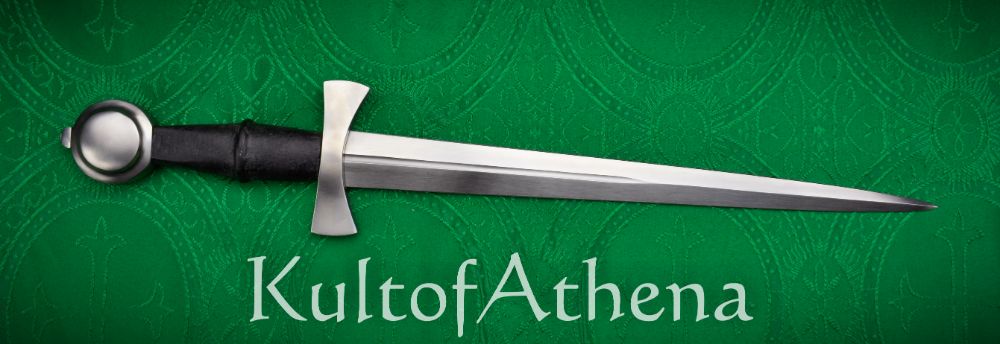
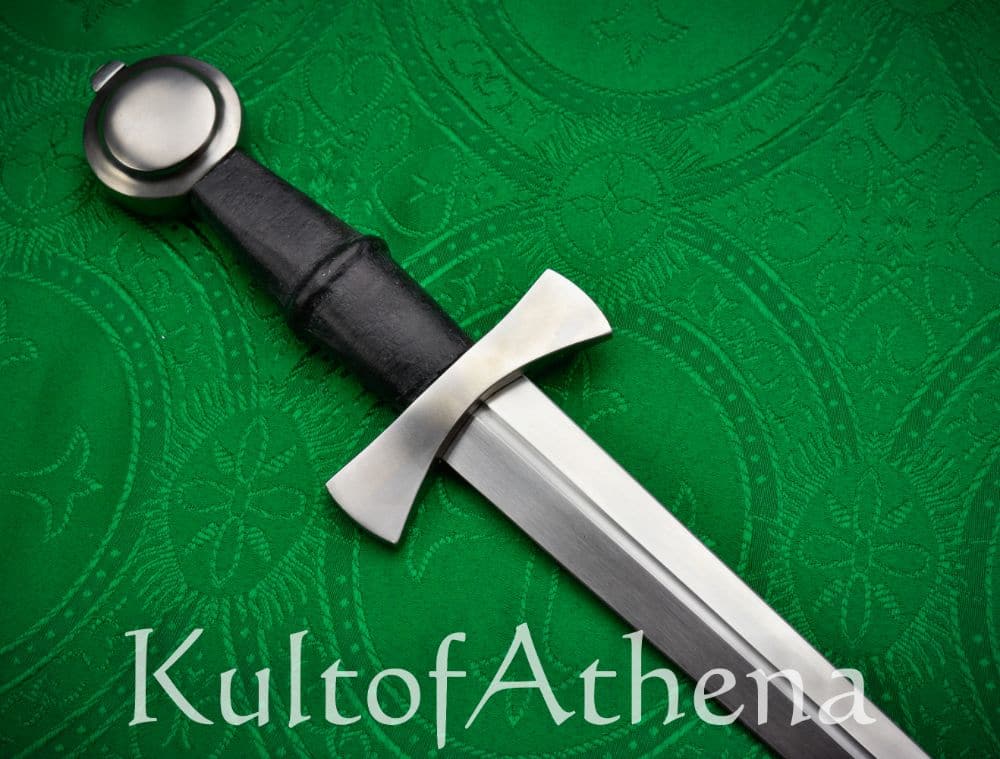
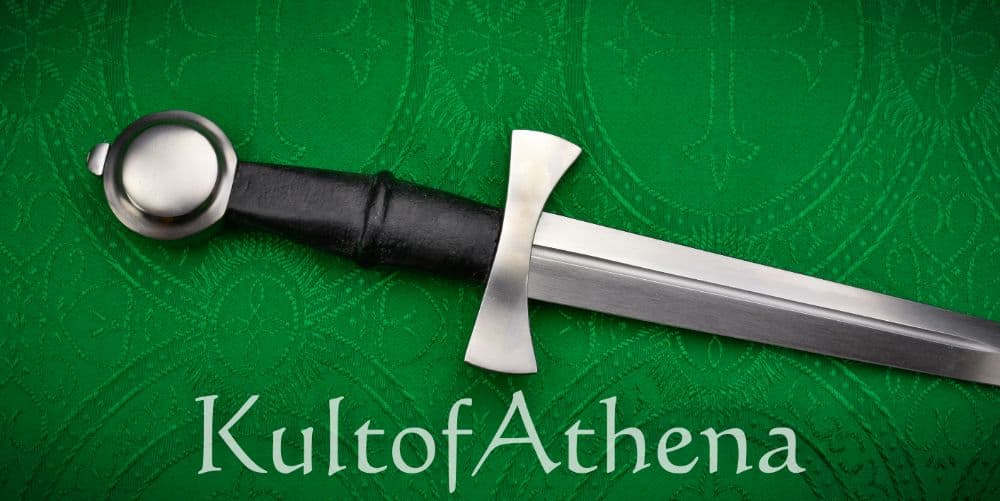
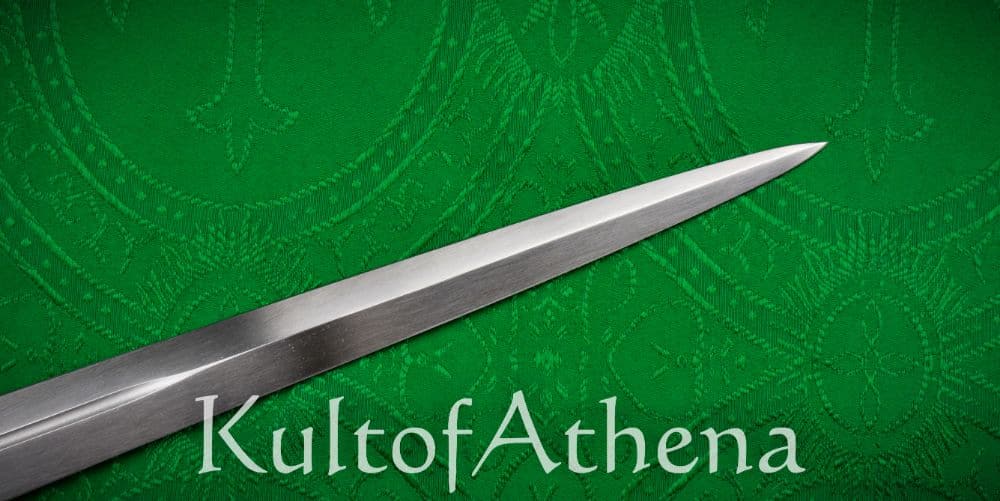
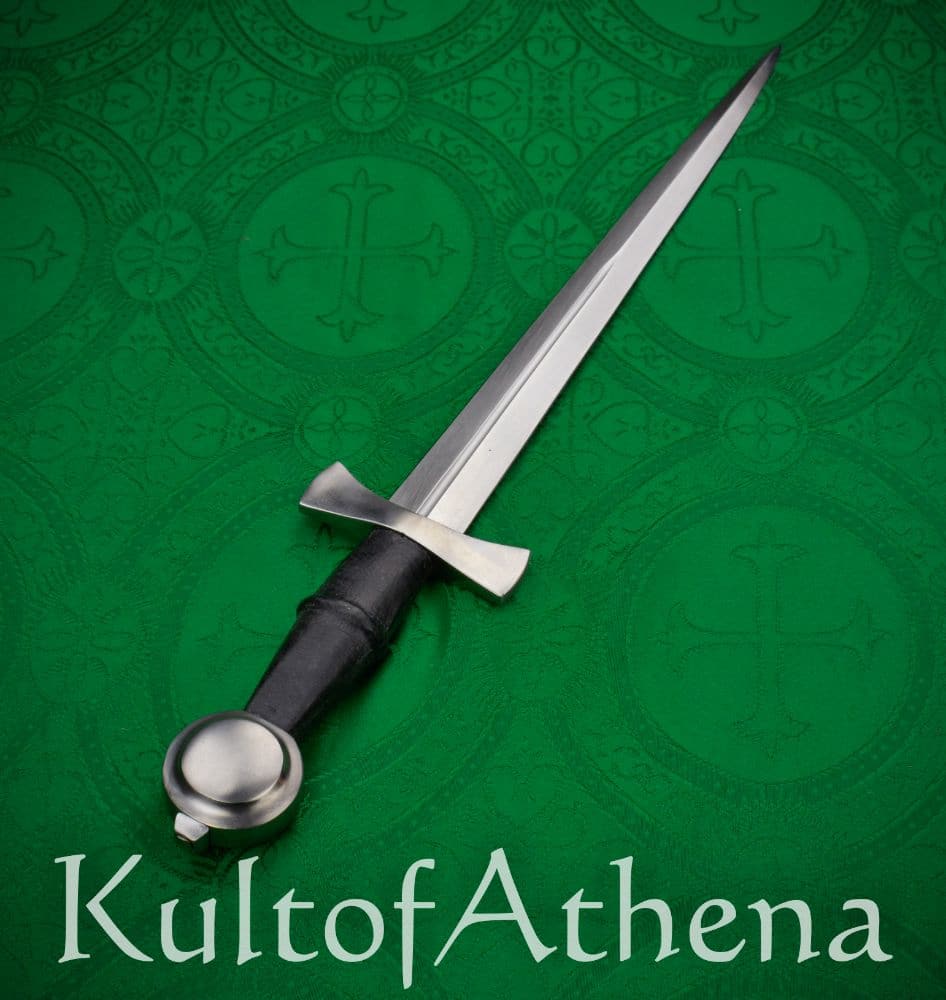

Reviews
There are no reviews yet.